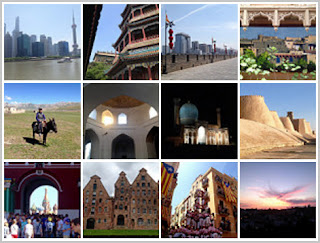Central Asia has always held out to me a special enchantment. There at the Jaxartes ended the empire of Alexander; there in the trackless steppe gathered the hordes which plagued the ancient and medieval world; there on dusty plains lie Samarkand, Kashgar, and a scattered constellation of cities where the meandering trade roads between East and West converge. The term “Silk Road,” though not coined until 1877, announces an older half-imagined adventure of camel trains in haunted wastes, of turbaned merchants in covered bazaars, of danger and romance by starlight. Archaeological evidence suggests that commerce between China and Europe never matched the vision of orientalists. Nevertheless, the transcontinental route that we call the Silk Road changed history by transporting and transforming the culture, religion, art, and technology of every civilization it touched. My own journey along Silk Road—from a ferry embarked in Kobe harbor on 10 May to a final flight from Madrid on 9 ...

